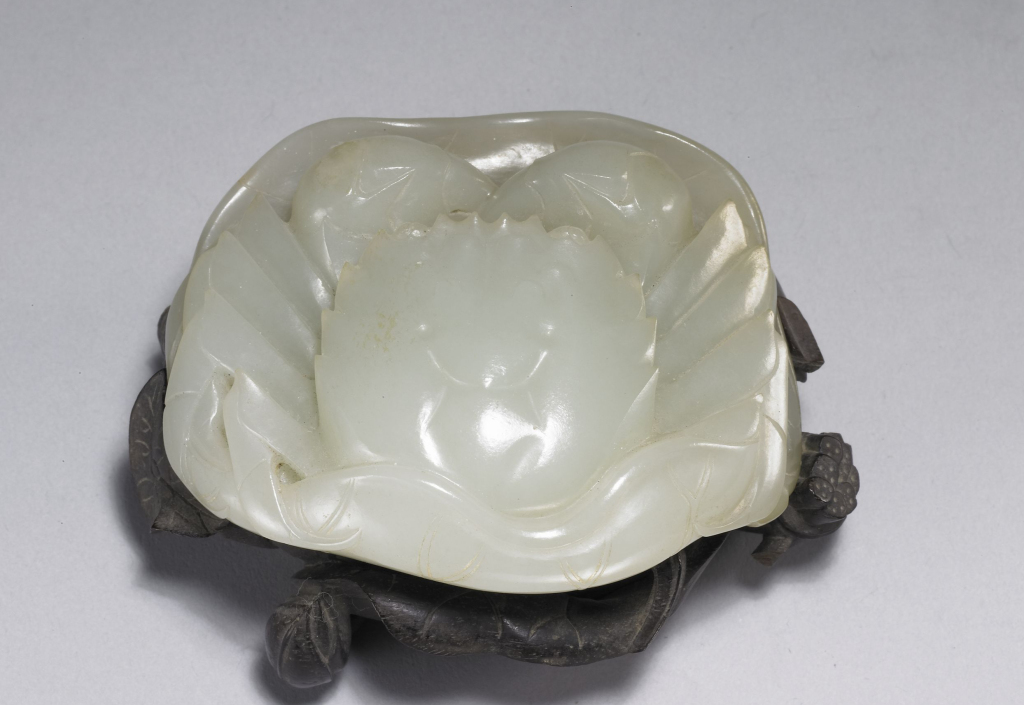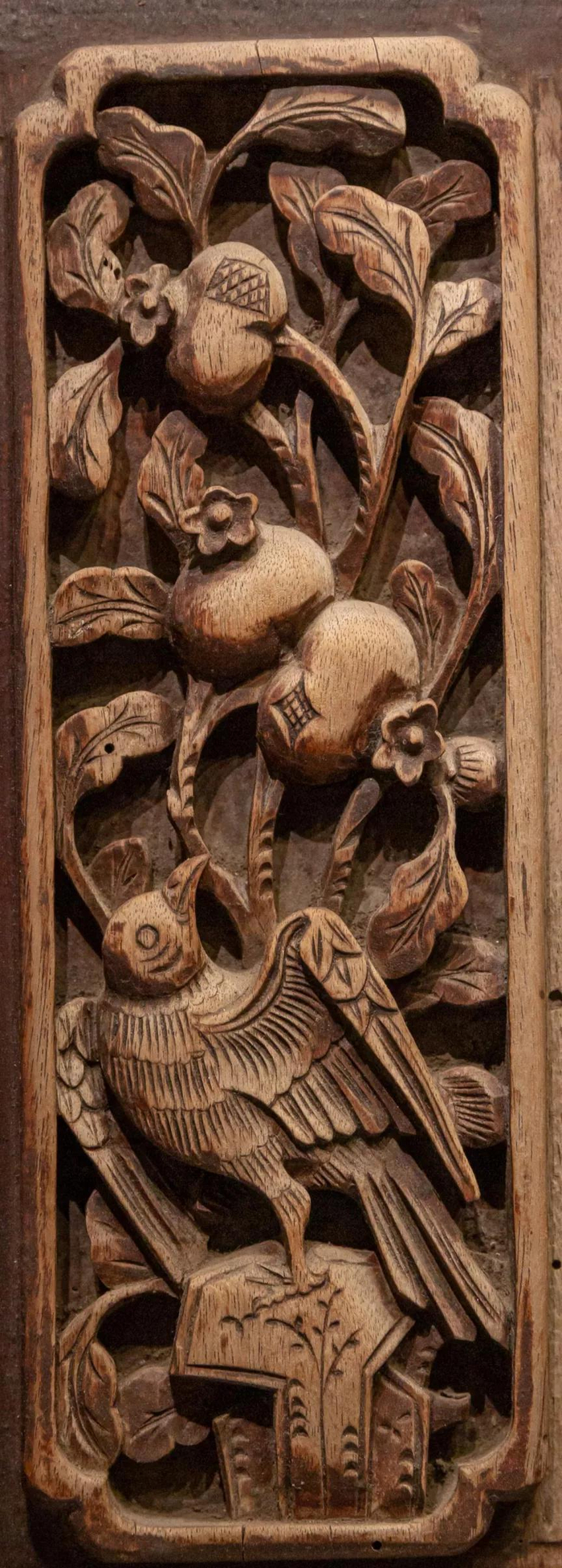
With every carving and every engraving, the poetry and wisdom of the Autumnal Equinox have been quietly flowing on cultural relics for thousands of years.
"The clepsydra still chimes in the night, the autumnal equinox is approaching. The rustling of springs brings pine cranes to their nests, and the wind clears away the clouds obscuring the moon." This is how the Tang Dynasty poet Jia Dao described the tranquil nightscape of the autumnal equinox. During this time, "yin and yang are equal, so day and night are equal, and cold and heat are balanced," and all things in heaven and earth enter a state of equilibrium. The ancients incorporated the natural scenes and emotions of this season not only into poetry but also into art forms such as jade carvings, wood carvings, and Han Dynasty stone reliefs, becoming cultural symbols that carry the deep affection of time.
During the Autumnal Equinox, the summer heat recedes, and the air becomes crisp and clear. Folk customs include eating autumn crabs and tasting new rice. Han Qi, a poet in the Song Dynasty, wrote in his poem "Autumnal Equinox of Gengxu": "When the wheat heads have no ears, a slight drought occurs; when mosquito bites bloom, the poison gradually disappears," reflecting the ripening of crops during the Autumnal Equinox.
The ancients incorporated the natural scenery and life emotions of this season not only into poetry, but also engraved them into art forms such as jade carvings, wood carvings and Han Dynasty stone reliefs.
Ancient Han Dynasty stone reliefs, treasures of Han dynasty art, bear numerous traces of the Autumnal Equinox. These images, carved into stone with their simple and majestic style, depict autumn as people saw it two thousand years ago. The Shaanxi History Museum houses a stone relief depicting the gods of spring and autumn from the Eastern Han Dynasty, unearthed in 1996 from a Han tomb in Shenmu, Shaanxi. The left side of this relief depicts the god of autumn, Rushu, with a unique form of "human face, human body, bird feet, and animal tail." He wears twin buns, a short, wide-sleeved jacket, and a feathered skirt. He holds a compass in his left hand and a moon in his right, with a toad nestled within it.

Autumn god picture stone
The Huainanzi records: "The West is the metal element; its emperor is Shaohao, and his assistant is Rushu, who governs the autumn season with a compass." Rushu was regarded as the god of autumn, the West, and the heavenly punishment god. His image reflects the ancient people's mythological imagination of the changing seasons.

Brick rubbing of a picture of hunting and harvesting
Unearthed from the Han Tomb at Yangzishan in Chengdu, Sichuan, this Eastern Han Dynasty brick depicts archery, shooting, and harvesting. It depicts the autumnal atmosphere of the farmlands of Bashu during the Han Dynasty. Composed of two parts, the upper section depicts two figures shooting arrows by a lotus pond, startled by geese and the playful swimming of fish and ducks. The lower section depicts six figures at work, including wielding sickles to cut rice ears, gathering bundles, and carrying rice baskets on their shoulders. Elements such as withered trees and lotus pods suggest autumn, while the archery and harvest scenes together reflect the manor economy of the Eastern Han Dynasty. The brickwork is meticulously arranged, with clean, flowing lines, and vividly depicting details such as fish and birds.
Han Dynasty stone reliefs in the Linyi Museum's collection depict more specific scenes of life during the Autumnal Equinox. One stone relief depicts "a spectacular autumn hunt," while another, a "Dan-handle Han Dynasty stone relief," depicts the autumn harvest.
Scenes depicting the Autumnal Equinox are a common sight in Ming and Qing dynasty jade carvings. Jade carvers used their knives as pens, permanently encapsulating the meaning of the Autumnal Equinox within the solid jade.
The autumn leaves in jade carvings vary in form, from maple leaves whose frosted leaves are redder than February flowers, to ginkgo leaves whose yellow leaves blanket the ground, to ordinary yellow leaves whose rustling yellow leaves close the window. While these leaves share the same material, each is carved with unique veins and forms, adding to the vibrant beauty of autumn.
The autumn cicada in jade carvings also holds special significance. Unlike the vibrant chirping of summer cicadas, the autumn cicada often only chirps a few times or no longer, conveying a sense of restraint and sadness. However, jade carvers skillfully mitigate this melancholy, emphasizing the cicada's noble character and beautiful meaning.
The most vividly lifelike of all is the autumn crab theme. As the saying goes, "When the autumn wind blows, crabs' legs itch; when chrysanthemums bloom, the crabs come to you." The autumnal equinox is when crabs are plump and roe-filled. Crabs in jade carvings not only satisfy people's appetites but also carry profound cultural connotations: the crab's eight legs represent stability and wealth; its claws symbolize the protection of wealth; and the crab's sideways movement was known in ancient times as a "horizontal warrior."

Jade crab from the Qing Dynasty, collected by the National Palace Museum in Taipei
A Qing Dynasty jade crab, ochre-spotted and housed in the National Palace Museum in Taipei, features a crab carved on a lotus leaf. Its crystal-clear body rests on a wooden stand carved into the shape of a lotus leaf, creating a delicate and exquisite experience. Another lotus leaf-shaped brush and inkstone, carved from bluish-white jade with large ochre spots and shells, is shaped like an irregular lotus leaf, its edge raised to form a shallow disk. The edges are embossed with lotus roots and stems, and adorned with crabs and snails. The shapes are naturally vivid and playful. These jade carvings, embodying the theme of the autumnal equinox, transcend the constraints of season through artistic expression, allowing the exquisite beauty of autumn to transcend the constraints of season and become a timeless presence.

Lotus leaf-shaped brush and inkstone
In Huizhou, which is famous for its wood carvings and brick carvings, the most common scene during the Autumnal Equinox is "drying the crops in the sun" - villagers carefully dry the harvested corn, soybeans and other crops in the drying yards in front of and behind their houses and in the courtyards. This custom originated from the local traditional custom of "Spring Prayer and Autumn Report" 1,800 years ago. Huizhou craftsmen have permanently engraved the artistic conception and folk customs of the Autumnal Equinox on wood carvings, stone carvings and brick carvings.
In the "Ancient Architecture of Huizhou" special exhibition hall of the Anhui Museum, there are many exquisite wood carvings with autumn themes, such as bird-patterned wood carvings from the Qing Dynasty, which depict birds returning from foraging or perched on pomegranate branches in autumn. These wood carvings not only decorate Huizhou architecture, but also become an important carrier for recording the customs of the Autumnal Equinox.

Huizhou Woodcarving
In the ancient villages of Chengkan and Xidi, carved wooden window panels depict a joyful gathering after the autumn harvest. Four people converse animatedly in a pavilion on the right, while a child near a building entrance leans out, seemingly searching for a playmate. At the courtyard gate on the left, an elderly woman beams, waving goodbye to a guest. The overall scene is tranquil and harmonious, reflecting the stable and peaceful social environment of Huizhou during the autumnal equinox.

A detail of the "Lotus and Crab Brick Carving" in the Anhui Museum
Among brick carvings, the "Lotus and Crab Brick Carving" in the Anhui Museum is a prime example. This brick carving depicts a lotus pond, with crabs and birds frolicking within. "Lotus and Crab" sounds like "harmony," implying a harmonious and happy family. "Blue bricks, black tiles, horse-head walls, corridors with lattice windows." Huizhou architecture, framed by Huizhou brick carvings, embodies the spirit of mountain scenery and the essence of Huizhou culture, presenting a city like an ink painting. The artistic conception of the Autumnal Equinox is also poetically captured within these blue bricks and black tiles.


